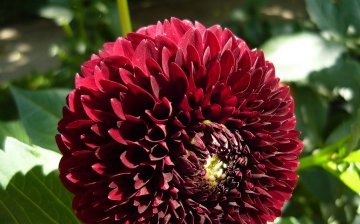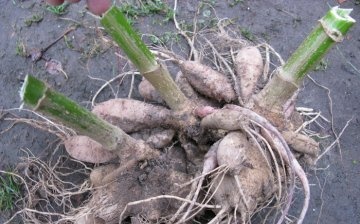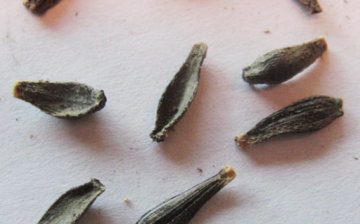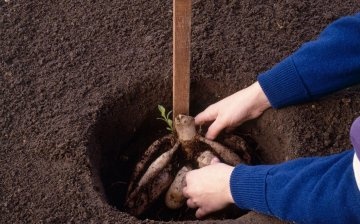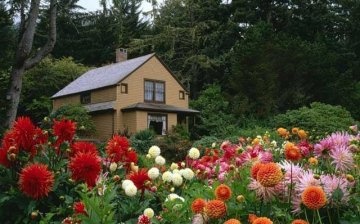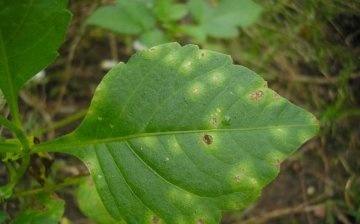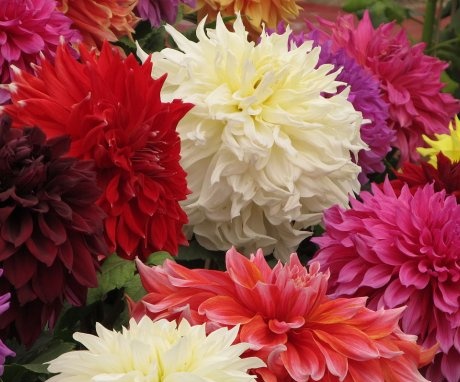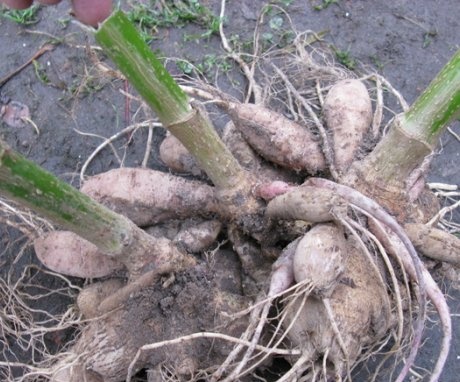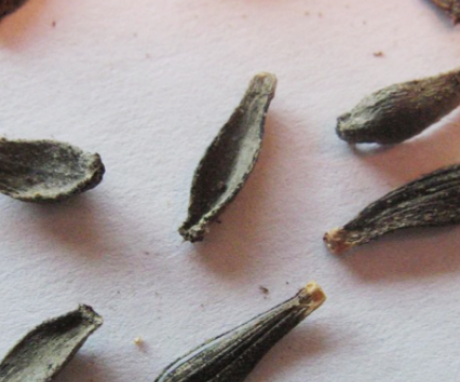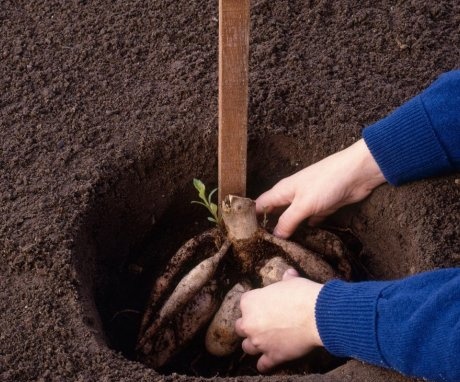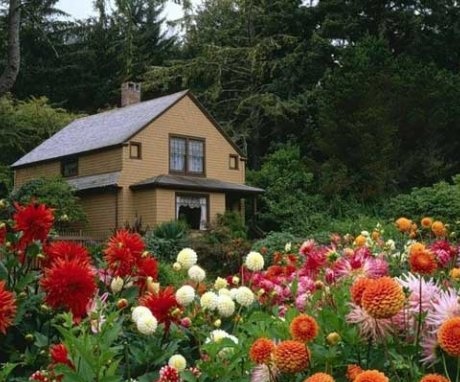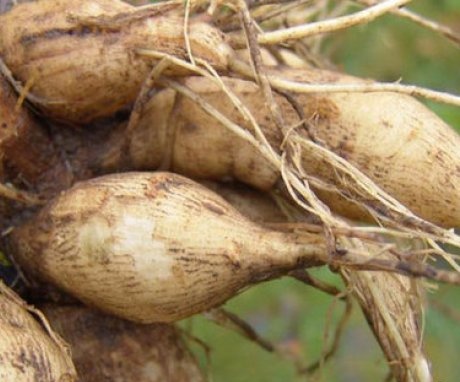All about dahlias: planting and caring for flowers
Dahlias - perennial plants of the Astrov family. Their homeland is Mexico, but there they had a different name. From there, the flower was brought to Europe at the end of the 18th century. Here he received the name dahlia (lat.) And the known to us "dahlia", named after the Russian scientist I. Georgi.
Content:
- The main classes and varieties of dahlia
- Dahlia breeding
- Growing from seeds
- Dahlia planting
- Dahlia care
- Pests and diseases
- Preparation for wintering and storage of tubers
The main classes and varieties of dahlia
The plant has a straight, smooth, hollow stem. It can grow up to 2.5 m. The leaves are large, most often feathery, green or reddish. In the fall, the stems die off, and in the spring new ones grow.
The inflorescence is a basket. Wild Mexican dahlias are flower-shaped more like a sunflower with white petals and edible fruits. Ornamental forms grown in gardens are most often terry. Some have wide marginal petals and inner ones - ligulate. The colors can be very diverse, except for blue. There are many two-tone varieties.
Now 42 species are known, which are divided into 12 classes of dahlia. They differ mainly in the height and shape of the flower. Each of the classes includes hundreds of varieties. There are about 13 thousand of them in total.
All dahlias are divided into classes according to the shape of the petals:
- Simple - low up to half a meter, flowers, the petals of which are located in 1 row. Diameter up to 1 dm. Popular varieties "Princess Maria" (pink petals), "Orange", Yellow Hammer.
- The anemone grows up to almost 1 m, the diameter of the inflorescence is also small, about 1 dm. The marginal petals are large and can be arranged in 1 or more rows. The inner ones, rolled up in a tube, with a cut edge, fill the remaining space. Comet varieties with red flowers, Lucy (yellow with lilac),
- Collar got their name from the shape of the second row of petals. They are short, twisted in the form of a collar, shading the outer ones with a contrasting color. The middle of the inflorescence is filled with tubular petals, tightly adjacent to each other. Plant height 1 m, flowers 1 dm in diameter. This class includes La Gioconda (red with gold petals), Chimborazo.
- Peony - unpretentious plants with inflorescences up to 1.5 dm wide. Along the edge there are two rows of wide petals, inside - tubular. The colors are monochromatic. This class includes varieties Fascination with pink petals, "Symphony" in red.
- Ornamental dahlias are bushes up to 60 cm high with double flowers with a diameter of 8 to 25 cm. The marginal and central petals practically do not differ in shape. They are slightly curled towards the base along their entire length. Among the varieties, there are many two-colored. Cultivars Kenora Valentine with red petals, Papageno with pale pink flowers, Giocondo with large purple flowers, Thames Valley with yellow flowers, David Howard with small orange flowers.
- Spherical, up to 1.2 m high and 8 to 15 cm in diameter, typical representatives of which are Crichton Honey with red petals, yellow Esmonde, orange-red "Svirel", white "Lancress". The petals are rounded at the edges, but curled, unlike the decorative ones, upward.
- Pompon, flower-shaped similar to spherical, but more convex.It grows up to 1.2 m, flowers from 5 cm in diameter. Represented by Noreen varieties with pink petals, Hallmark lilac.
- Cactus, with petals rolled into a tube and pointed. In this case, the marginal petals are the same as the inner ones. The height of the bush can reach one and a half meters, diameter 8-30 cm. Varieties of this class Visit with large red flowers, Danny and red-yellow Akita, the flowers of which are even larger, "Pirouette" with small yellow flowers.
- Semi-cactus are similar to Cactus, but the petals are more pointed at the top. Representatives - Nantenan with large yellow flowers, Yellow Mood with small ones.
- Nymphaeans are distinguished by beautiful double flowers with large wide petals. This class includes varieties Genette with white flowers, Gerry Hawk with pink flowers, "Pink Diadem" of bright pink color.
- Mixed or Transitional includes all varieties that can be attributed to several other classes at once. Representatives - "La Vie" with raspberry-cream petals, "Figaro" with pink flowers.
Dahlia breeding
Dahlias breed:
- Tubers
- By dividing the bush
- Seeds
In the spring, in April or May, you can buy dahlia tubers. They should be strong, not flabby or wrinkled. Necessarily the presence of sprouts, one or more. You can buy not sprouted, but the presence of a sprout indicates a high-quality tuber. If the neck is rotten or dry, it may not sprout at all. Some varieties will definitely want to keep in order to plant next year. This is not difficult to do, but you need to have a storage room for the tubers. It should be cool and dry there (temperature 3-5 ° C, and humidity not higher than 70%).
In the spring, the tubers are examined. Remove dried or damaged parts. The cut sites are treated with disinfectants. Each is planted separately or placed in a common box and covered with light soil, sawdust, peat. The tops should protrude a couple of centimeters. Moisturize, but do not pour, so that rotting does not begin. Install in a bright place.
When buds appear on the roots near the neck, they divide it into parts.
This is done so that each has a heel with one or more sprouts. Stalks will grow from them in the future. If the bush is weak, it is not cut into pieces. Do not plant an uncut root. It will grow very bushy, with weak thin stems and small flowers.
Delenki are planted in a permanent place or grow them a little in a pot. You can cut side shoots from 1 dm in length and root them in a shaded place. Cover with a jar or build a greenhouse. Watering, preventing the soil from drying out. When the stalk begins to grow, it is planted in a permanent place - light and spacious.
Growing from seeds
For those who do not have the opportunity to store tubers all winter, you can try to sow seeds. They remain viable for up to 3 years. They do this in early May. Such plants will bloom, with proper care, closer to autumn. Therefore, it is worth growing them from seedlings.
Features of growing seedlings:
- Prepare dishes, pour disinfected sand into it.
- The seeds are laid out, sprinkled with the same sand on top.
- Moisten the surface with a sprayer, cover with glass or film.
After about a week, the seeds will hatch and germinate. The temperature should be quite high, around 26 ° C. When the plants have a pair of true leaves, they dive - planted in a separate dish.
The substrate is prepared loose, moisture and air permeable. Buy it at a flower shop or cook it yourself. The air temperature is gradually reduced. Seedlings are planted in late May - early June. Before that, it needs to be hardened. First, the seedlings are taken out for several hours, and left overnight before planting.
Dahlia planting
It is advisable that the sun shines on the plant all day. In partial shade, the plants stretch out, flowering will not be plentiful. The earth should be nutritious, light. It is necessary to provide high-quality drainage. Acidity neutral. Acid is deacidified with slaked lime, peat is added at pH 8.6.
It is better to prepare the site in advance. Before that, 3 years should not grow on it dahlias or asters (after all, these flowers belong to the Astrovs, therefore they have common diseases). They bring in humus, dig up the soil. Scattered over the surface in spring wood ash.
Pits are prepared so that their size is 3 times larger than the size of a clod of earth with roots.
A layer of humus is placed on the bottom. Sprinkle with earth to avoid burns. Set the tuber to the bottom. The sprout must have looked out. A peg is installed next to it. The stems of the plant will be tied to it.
Water the planted dahlia mulch with sawdust, peat, humus to a height of 5 cm. Mulch will protect the earth from rapid drying, will become an obstacle for slugs. The mulched area is not loosened, weeds practically do not grow on it.
Dahlia care
How to properly care for flowers on the site:
- Dahlias are watered regularly, given the weather conditions. Watering too much can lead to root rot. You can huddle the plant. This makes it more resistant to wind gusts. But before watering, you need to remove the soil layer and bring water closer to the root. Then they spud again.
- Dahlias are fed after 2 weeks. First, nitrogen fertilizers are applied. It can be ammonium nitrate (15 g / m2) or organic fertilizers (infusion solution mullein or chicken droppings). Better to alternate them. In the budding phase, phosphorus-potassium fertilizers are used. At the end of August, no fertilizer is applied to dahlias. This will help the tubers winter better.
- To make the flowers large and spectacular, the bush is formed by cutting off the weak and excess stems. It is recommended to leave them no more than 3 pieces. On each of them, the number of buds should be no more than two.
- Usually, the bushes, fixed by a support, hold well and are not damaged by the wind. But sometimes the stems still break. Sometimes it is possible to save the plant by putting an impromptu splint on the stem. To do this, take a strong stick and fix it to the stem above and below the break. If no seed is planned, the flowers are picked shortly after full disclosure. After all, they weaken the plant.
Pests and diseases
Dahlias are quite resistant to fungal diseases, weakly affected by pests. But sometimes, with excessive watering, slugs settle on their stems. They feed on the sap of the plant, weakening it. You can get rid of them by sprinkling with wormwood broth. Processing is carried out once a week, in the evening.
The main pests of dahlia leaves:
- Aphids and thrips feed on plant sap.
- Caterpillars gnaw on leaves.
- Earwigs gnaw the buds, so the flowers have an ugly shape.
You can fight them with insecticides... Aphids are destroyed by treating with a solution of laundry soap. But with a large concentration of individuals, it helps little. Wormwood infusion will help get rid of earwigs.
Preparation for wintering and storage of tubers
To dahlia endured the winter without problems, it is necessary that its root collar is well ripe by the time of digging. To do this, she needs to provide a large amount of heat and light. At the end of August, the lower leaves are plucked from the bush, providing access to the sun's rays. Hilling the bush also contributes to the proper preparation for winter. During the first frosts, which often come unexpectedly, the neck will be covered with earth, so it will not be damaged by frost.
Dahlia cannot stand temperatures below 0 ° C. Its aerial part, especially leaves and flowers, disappears. Therefore, after the first frosts or in front of them, bushes are dug. Some growers cut the stems a couple of days before digging up the roots. You just need to make sure that no raindrops or other moisture get into the hollow stem. In order not to damage the roots, dig in them from all four sides. The distance from the shovel to the stem should be about 30 cm. Then the bush is carefully lifted.If the ground is loose, this is easy to do. If the root does not give in, you need to take a pitchfork and pry the bush.
Then they carefully clean the bush from the ground, wash it in running water, removing pests and diseases. Dry in the sun for several hours. This makes the collar strong and increases the root's chances of overwintering successfully. But you can't overdry it too much, this will weaken the tubers. The place of cut and possible damage is treated with ash and scrap.
Prepared rhizomes are placed in boxes, covered with coniferous sawdust or peat.
In winter, the tubers are periodically examined, assessing their condition. If the sawdust is very dry, it is recommended to moisten them. But what if there is no dry cellar, but you want to keep the variety? Some growers water the bushes abundantly to keep the soil moist below the roots. Then the bush is dug up, but the earth is not removed from it. It is dried together with a lump of earth, covered with a layer of paper and stored. If possible, choose the coolest part of the warm room. The layer of earth does not allow the tubers to dry out, so they are stored until spring. Then they are soaked in water and germinated.
More information can be found in the video:



